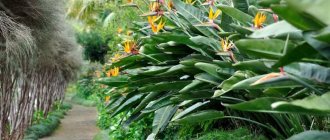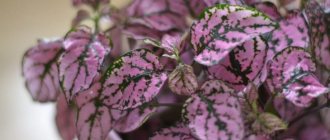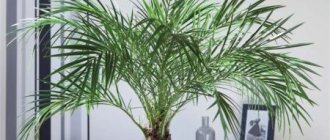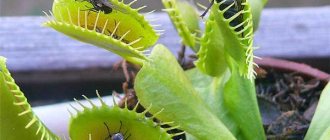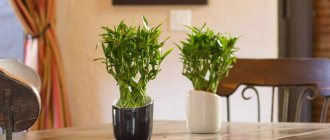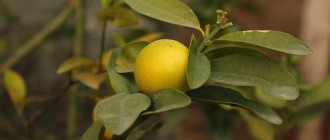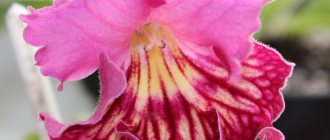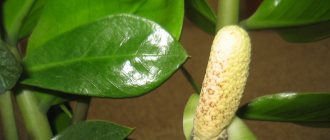A smaller number of plants make their presence known as Philodendron Congo Rojo. It is not for nothing that it is often called the Imperial Red Philodendron. The grandiose philodendron loves to be the center of attention in any setting. Place it on the table and it instantly becomes the centerpiece. Keep it near a window and that's where you'll be looking most often.
This ability to attract your attention is one of the reasons for its popularity and success as a houseplant. If you're wondering how to grow one or how much care it will require, don't be surprised. This article tells you everything you need to know about the famous Philodendron Congo Rojo.
Description
Philodendron leaves can be plain or spotted.
The genus of evergreen perennial philodendrons includes more than 200 species. Translated from Greek, the name of the plant sounds like “loves trees.” And this is no coincidence, because in nature, a plant living in tropical forests often looks like a vine and chooses strong trees for support.
Most varieties form thick aerial roots, like Monstera. They help the flower cling to support and reach for the light. Also, with the help of them, the plant receives nutrients and moisture.
Philodendrons can vary greatly in the appearance of their leaf blades. Large shiny leaves are dissected or heart-shaped, have different colors - from dark green to brown-red. Lianas have long thin stems, while other species have short stems.
Some varieties bloom even at home. It is worth noting that the sap of the plant is poisonous, so it should be grown with caution in areas where there are children and pets. Gloves should be worn when pruning or replanting.
Problems
Philodendron cannot be called a capricious plant, but sometimes even experienced gardeners grow poorly. The reason for this is some mistakes in caring for it.
Often the leaves of this plant turn yellow . This can happen for various reasons. If yellowness appears along the edges of the leaves, the plant is watered too much. If yellowing soon spreads to the entire leaf blade, it is due to a lack of fertilizer.
Excess sunlight causes yellow, dry areas on the leaves - burns.
If the plant suffers from insufficient lighting, the leaves decrease in size, the shoots become elongated, and the distance between the leaves increases. With a large lack of light, the plant may have whole leaf blades instead of dissected leaves; in variegated varieties the leaves turn green.
Popular varieties
Of the huge number of varieties of philodendron at home, the following are most common:
- Philodendron climbing has dense heart-shaped leaves up to 14 cm long. It is shade-tolerant and can be grown as an ampelous plant. The stem has clinging aerial roots.
- Philodendron Sello or bipinnate. It has large, emerald-colored leaves cut into lobes. They reach a length of 70 cm. This is the most decorative flower of this species, which is grown at home. It grows up to 2 m in height.
- Philodendron blushing is medium in size. The petioles have a reddish tint, the leaves are arrow-shaped and bright. Needs strong support and bright lighting, otherwise the leaves lose their saturation. Can bloom indoors.
- Philodendron Atom requires especially careful care. It has beautiful curled leaves, compact and lush.
- The golden-black philodendron has large, velvety, dark green leaves. They are streaked with gold and have a red underside. Requires intense lighting and high humidity, so it is more often grown in greenhouses than in apartments.
- Philodendron Xanadu is unpretentious, but beautiful leaves can only be achieved in bright light and high humidity. This variety can bloom indoors.
- Philodendron warty has beautiful velvety leaves up to 20 cm long. They grow on petioles with warty bristles.
The plant does not tolerate dry air well. Philodendron variety "Xanadu".
Trimming / Support / Garter
Most types of philodendrons are hanging plants, the shoots of which can grow several meters in length.
To give the plant the appearance of a lush bush with many shoots, it is pruned.
Cut vines can be used for rooting, and the remaining parts will very soon sprout new shoots. This is how a plant of the desired configuration is formed.
To give the plant stability, special supports are used . These are soft columns by which the philodendron is held by its aerial roots. If the plant does not hold onto the support firmly, it can be tied to it with a rope.
Home care
Philodendron is not too demanding on lighting and is easy to grow at home. The vines need to be provided with a strong support, wrapped in moss or coconut fiber. Indoors, vines bloom more readily than bushy species, but this requires proper care.
Temperature and lighting
It is better to place any philodendron in a place with diffused light without direct sunlight. Variegated varieties need more light. Western and eastern windows are optimal. When there is insufficient lighting, the plant's petioles stretch out, new leaves are smaller in size than the previous ones, and do not have varietal dissections.
Philodendrons climbing, blushing, brilliant are unpretentious. These varieties are suitable for keeping at a temperature of 16-25 degrees in summer and not lower than 12-13 degrees in winter. Split, warty, golden-black philodendrons are more moody. They need to maintain the temperature at 20-25 degrees at any time of the year.
If the conditions are not met, the leaves grow whole and crooked. All philodendrons do not like drafts. For this reason, it is better not to take them out into the open air, even in summer.
Aerial roots of philodendron.
Humidity and watering
There are varieties that tolerate dry air well, but philodendron loves high humidity. In nature, the plant grows in tropical forests, so it responds gratefully to daily spraying. You can wipe the leaves with a wet cloth.
Excessive watering will be detrimental to philodendron. The leaves will begin to dry out at the tips and then begin to fall off at the bottom of the trunk. However, the soil should not be allowed to dry out either. The soil should be constantly slightly moist. In between waterings, the top layer of soil should dry out by about 1/3 of the pot.
In winter, philodendron is watered less often. Wait for the soil to dry out in ½ of the pot. They are cared for in this mode until mid-March. For irrigation use settled or boiled water. In the warm season, philodendrons are given a warm shower once a month - the pot is placed in the bath, the soil is covered with cellophane and the dust is washed off from the leaves.
Soil and replanting
Light, porous soil with low acidity is required. For newly rooted cuttings, mix ready-made peat soil with small pieces of coal and pine bark. For young plants, a mixture of humus and peat in a 2:1 ratio with the addition of sphagnum, bark, and coal is suitable.
For adult philodendrons, you can use orchid soil as a basis, which consists not only of bark, but also sphagnum, charcoal, and peat. If desired, add perlite or sand, leaf humus, or high-moor peat to it. Plants are replanted in the spring.
Young philodendrons are replanted every year, adults - once every 3-4 years. However, it is recommended for adult flowers to change the top layer of soil annually. The pot should be slightly larger than the previous one. The plant is transferred to a new container with an old lump, and the free space is replaced with fresh soil. At first, watering is reduced because the root system is damaged.
Young philodendrons are replanted annually, adults - less often.
Top dressing
In nature, the plant takes its nourishment from organic matter, rainwater, and rotted leaves. At home, philodendron is fertilized with mineral complexes for decorative foliage plants. They should have an equal ratio of nitrogen, potassium and phosphorus. However, the concentration of the solution should be 20% weaker than that recommended by the fertilizer manufacturer.
Despite its mild expression, the plant has a dormant period in winter, so intensive fertilizing is applied from mid-March until autumn - once every 2 weeks. In winter, either the flower is not fertilized at all, or a weak concentration is applied once a month. Do not feed a plant that is sick or has undergone transplantation.
Trimming
The aerial roots of the plant cannot be cut off completely, but can be shortened. This is done if they are too long or begin to die. Dying leaves should be removed at any time of year.
Philodendron is pruned to maintain a certain size in the spring. A little below the zone of the upper tier of aerial roots, a cut is made so that about 40 cm of the stem remains. If you need to limit the growth of the plant, pinch the growing point above the internode.
Fertilizer
For the proper development of philodendron, it needs regular feeding. The best fertilizers for it are complex mineral compositions, which contain potassium, nitrogen and phosphorus in equal proportions.
The plant needs to be fed from April to December . Fertilizers need to be applied every 2 weeks. At the beginning of January, feeding is stopped until spring.
Fertilizers are applied only to moist soil to prevent root damage and ensure uniform nutrient uptake. Therefore, fertilizing is carried out only after the main watering of the plant. It is very convenient to use liquid compositions for decorative deciduous varieties. They are diluted with water to obtain the desired concentration.
In addition to regular mineral fertilizing, you can feed the plant with organic fertilizers once a season . For philodendrons, it is enough to remove the top layer of soil 1-2 cm thick and put humus in its place.
Flowering period
Some types of philodendrons also bloom at home. The flower is a spadix covered with a white or red blanket. The inflorescences are very similar to calla lilies and appear in spring or summer. There is no smell. The flowering period, which is quite rare at home, does not cause an allergic reaction. But the sap of the plant is poisonous, so during any procedures you should wear gloves on your hands.
Philodendron flowering.
Diseases
In winter, stems and roots can rot if exposed to excess moisture and low temperatures.
Philodendron most often suffers from stem and root rot. Typically, this fungal infection appears in winter when there is excess moisture and low temperature.
At the first signs of disease, you should limit watering, increase the temperature, and sometimes transplant the flower to another soil.
Sometimes pests of indoor plants settle on the flower: thrips, red spider mites and scale insects. In the fight against them, you should not use traditional methods. With their help it is impossible to destroy all insects. Only insecticidal preparations can save the plant.
A fungal disease can affect a flower even in the warm season. It should be remembered that philodendron does not tolerate stagnation of moisture in the soil. The onset of decay is usually accompanied by yellowing and wilting of the leaves . Therefore, if there are any signs of fungal infection, drainage should be checked and watering adjusted.
In case of severe root rot, it is necessary to wash the roots of the flower and remove the diseased parts, and sprinkle the sections with activated carbon. After this, the plant is transplanted into new soil.
Difficulties in growing
Despite the unpretentiousness of the tropical forest dweller, problems can arise if care is taken incorrectly.
- A decrease in the size of new leaves, an increase in internodes, and loss of color of the leaf blade are signs of a lack of lighting.
- Yellowing of leaves can be caused by overwatering.
- The leaves turn brown and fall off - the plant lacks moisture.
- When the soil is wet, the leaves lose their elasticity. The reason is either rotting of the root system due to overwatering, or too bright light.
- The appearance of black spots on leaves, including between the veins, is usually a consequence of exposure to low temperatures.
- Brown spots are sunburn.
- The leaves turn brown, the tips lift up due to the dry air in the room.
- Wrinkling of leaves and the appearance of chlorotic spots are a consequence of treating the flower with chemicals.
- The leaves have turned pale - probably the flower does not have enough fertilizer or the acidity of the soil is not suitable.
Brown spots on philodendron leaves.
Philodendron diseases
The plant is most often affected by stem rot. It appears due to excessive watering and leads to soft tissues and loss of turgor by the plant. If the philodendron is not severely affected, you can try to save the plant by re-rooting. The trunk is cut off a few centimeters above the rotting site and rooted in soil or water.
Pests
Philodendron is affected by pests due to improper care, which weakens the plant. It is usually attacked by spider mites, aphids, thrips, and scale insects.
- Spider mites suck the sap from the plant, which causes yellow spots to appear on the leaves. In the affected areas, if you hold the sheet up to the light, puncture points are visible. On the reverse side there is white husk-dandruff - the skins of pests. For prevention, high humidity in the room should be maintained. And if the tick is already infested, acaricidal drugs are used.
- Aphid colonies on shoots are visible to the naked eye. First, the top of the plant becomes deformed, then the leaves curl, sweet dew appears, where sooty fungus later develops. To combat aphids, wash the plant with soapy water. If the damage is severe, use chemicals - Fitoverm, Intavir or others.
- Thrips leaves noticeable marks on the leaves in the form of silvery streaks and spots. The affected areas are strewn with small black dots - the excrement of the pest.
- When attacked by scale insects, brown or translucent plaques are noticeable on both sides of the leaf, representing nothing more than the shell of the pest.
Thrips and scale insects are fought in the same way. First, the affected plants are washed with a soap solution, then the soil is spilled with a systemic insecticide such as Aktary or Confidora. Repeated soil treatment is carried out after a week.
Temperature
This heat-loving plant does not tolerate low temperatures. But the intense heat doesn’t have the best effect on him either.
In summer, the flower must be kept at a temperature no higher than 25ºС , otherwise its leaves will dry out and fall off, despite high humidity.
In winter, the temperature can be reduced slightly , since during this period the speed of vegetation decreases sharply. But the temperature should not fall below 15ºС, otherwise the cold may destroy the flower.
Reproduction
Philodendron can be propagated by seeds, apical shoots, pieces of roots, and sections of trunk. Growing from seeds is a long process, so real breeders resort to it. For beginners, it is better to use cuttings for propagation.
It will take a long time to grow such a large plant from seeds.
Sowing seeds
Seeds are sown in spring in the soil for philodendron to a depth of 5 mm. After sowing, the soil is sprayed with a spray bottle. The container is covered with glass or other transparent material, maintaining high humidity.
Keep the container with seeds in a warm, bright room. Shoots will appear in about a month and a half. They can be planted in separate containers after the first pair of leaves appears.
Philodendron cuttings
Rooting is best done in late spring or early summer. The top or shoot with two pairs of healthy leaves and a growing point should be cut off from the plant. The bottom leaf must be removed, and then the cutting must be buried in the soil mixture.
For rooting, wet sand, a peat tablet or standard soil for philodendrons are suitable. The buried cuttings should be watered abundantly, then covered with a transparent container or bag, providing increased humidity. The greenhouse needs to be ventilated every two days. When the cutting takes root, it can be transplanted into a pot with a diameter of 10 cm.
Rooting a Philodendron cutting in water.
Rooting fragments
When propagated by parts of a trunk or root, they are placed in a mixture consisting of peat and sand in equal quantities. Place the buds up, after which the plant fragment is sprinkled with a little soil. A greenhouse will be organized on top. It is aired a couple of times a week. After rooting, the seedling is placed in a separate pot.
Light
Philodendrons usually grow best in partial sun. They would naturally receive dappled light under a tropical canopy rather than direct sun. Indoors, place them near a window that receives bright, indirect light. Too little light can result in leggy plants with a lot of space between the leaves. But too much light can cause many leaves to turn yellow at the same time. Yellowing of just a few leaves is usually normal aging.
Recommendations
The flower can be grown from seeds, which are sold in flower shops. Or you can purchase an already grown plant there or in a greenhouse. The cost depends on the age of the flower and its size. So, a plant 35 cm high costs about 2,500 rubles, 80 cm - 4,500 rubles. Philodendrons 150 cm high cost about 40,000 rubles.
Philodendron is not a very difficult plant to grow. However, if there are errors in care, it is subject to attacks by pests and may lose its decorative effect. Its juice is poisonous, so philodendron should not be grown in areas where there are small children. When purchasing, you should refuse a specimen with yellowing leaves.
Is it possible to keep a philodendron at home?
Superstitious and overly cautious gardeners do not recommend keeping philodendron at home.
The first category of such advisers is guided by signs. It is believed that philodendron is a “husband buster” plant that provokes quarrels and the subsequent departure of the spouse from the family. Especially in this regard, they slander the climbing philodendron, one of the most popular domestic species.
The second category of flower growers bases their beliefs on one simple fact: philodendron juice is poisonous . Therefore, if you are going to have such a tropical beauty at home, you should work with them with gloves so that the juice does not irritate the skin.
You should not believe in omens, but you must adhere to the main rule of all young parents and pet owners: keep the poisonous vine where children and four-legged pets cannot reach it. If there is no such inaccessible place where you could “hide” the philodendron, you should wait or refuse to purchase it.
But there are benefits from the poisonous vine: philodendron is on the list of plants that do the best job of purifying the air. In particular, they rid the atmosphere of formaldehyde and xylene.
Reviews
It grows quite quickly; at my work this vine grew more than 4 meters. In a very bright place, its leathery, spear-shaped leaves acquire a bronze tint. The wrappers of the young leaves are very beautiful - they are almost red. A completely unpretentious plant, suitable even for northern windows. In the summer I take him out to the balcony - he feels great there even in the heat. With a lack of moisture, the leaves wither slightly, but after watering the turgor is restored. It can grow like a vine or, if pruned, like a “bush.”
Svetlana Yurievna https://irecommend.ru/content/krasneyushchii-tsvetok
The plant is very unpretentious and very grateful, stubborn in its desire to survive and grow further))) It grows slowly - about 1 cm per year.
keygen https://otzovik.com/review_476964.html
Very unpretentious! Calmly tolerates low air humidity and short-term drying out of the earthen coma. If you give it nutritious, loose, slightly acidic soil and diffused light, then there will be no problems! A very grateful and responsive plant!
sweetsvetulia https://www.flowersweb.info/forum/forum44/topic102067/message3283387/#message3283387
